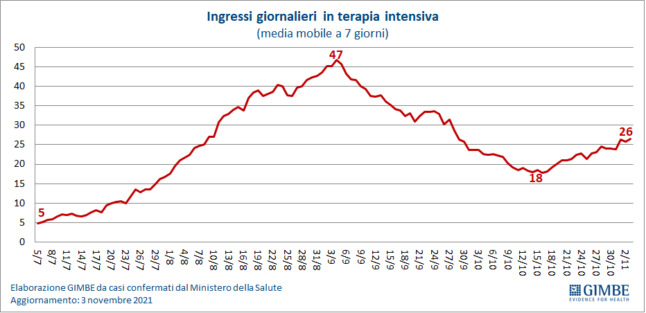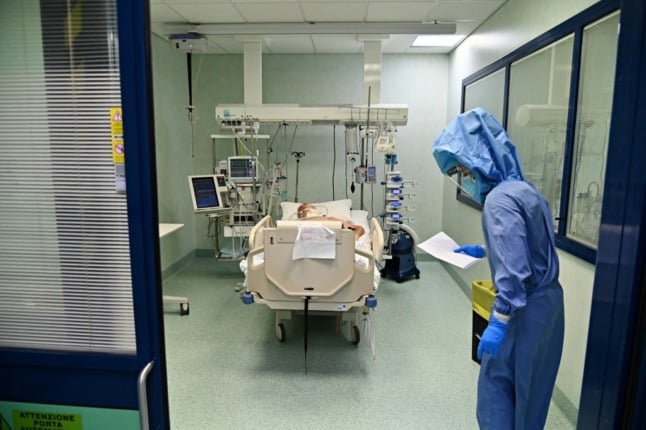The number of Covid-19 patients in Italian intensive care units increased by 12.9 percent in the period from October 27-November 2, the independent Gimbe foundation for evidence-based medicine said in its weekly report on Thursday.
The number of patients in intensive care units had been steadily dropping since the end of August.
Italy also recorded another rise in the number of confirmed Covid-19 cases (+16.6 percent) and an increase in the number of patients with coronavirus being admitted to hospital (+14.9 percent), data from the health ministry showed.

The number of Covid-related deaths in the last week was relatively stable at 257, compared to 249 the previous week.
The report stressed that pressure on health services remained relatively low, with the proportion of ordinary hospital wards and intensive care beds occupied by Covid patients at five percent and four percent respectively nationwide, with regional differences.
READ ALSO: Which Italian regions have the highest Covid vaccination rates?
taly’s Covid emergency commissioner General Francesco Figlioilo stated on Thursday that “the growth in infections does not correspond, for now, to a proportional increase in hospitalizations”
He said the country’s vaccination campaign “is proving to be decisive in limiting severe forms of disease, with positive impact on the hospital system”.
However, the number of people being vaccinated against Covid-19 continued to fall this week (by -39.6 percent) with the number of people receiving a first jab now at roughly 20,000 a day.
READ ALSO: Why are Covid infections in Italy rising?
In the over-60s, Gimbe’s report noted the first signs of a “reduction in the effectiveness of the vaccine against serious disease”.
“The vaccine’s efficacy on serious illness is confirmed to be very high, but with a slight and progressive decrease,” the report stated.
The report said faster administration of third vaccine doses was needed in order to prevent an increase in serious cases among the most vulnerable this winter.
Health authorities are now recommending a booster shot to all risk groups and those over 60, as well as healthcare workers and care home staff. However, the take-up of third doses has so far been limited.
Italy is likely to make a third dose available to all from January.
The government recently set a new target of fully vaccinating 90 percent of the eligible population, and is reportedly considering making jabs mandatory for more groups as vaccine take-up continues to slow.




 Please whitelist us to continue reading.
Please whitelist us to continue reading.
Member comments